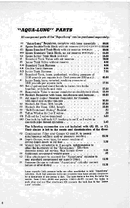The most interesting part is the name J and K valves never appeared in the catalog. The name came from the item numbers in the 1953 price list. It also shows why the reserve/J-valves were in the minority. Everyone knew they didn't work that reliably and they were over 3x the cost.
Show the whole page and look at the three items below the Self contained diving booklet..




